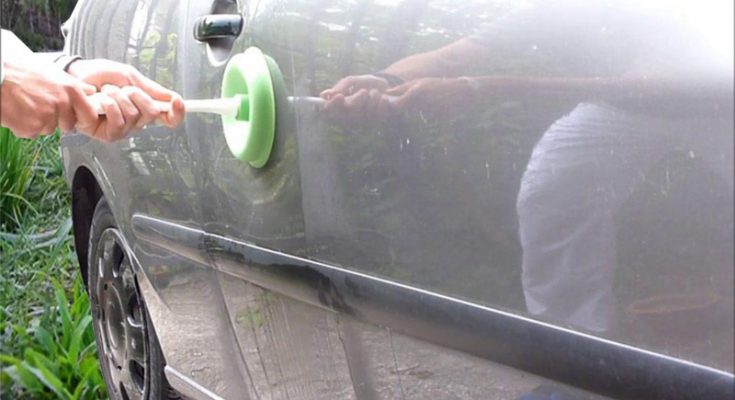The dents in the car are small indentations in the outer plate. A layperson is not able to fix accident damage or even a deformed frame. In principle, the smoother and rounder the outer edges of a dent, the easier it will be to repair. On the other hand, if the border is sharp and bent, homemade means may not work.
A dent in the body does not always imply damage to the paint. Modern car varnishes are quite elastic, so it is possible to treat a dent without applying paint with some luck. However, the most important thing to remove dents is heat. The cold varnish is porous and breaks easily. Therefore, car dent repair experts say a dent must always be treated with enough heat to make the paint adjust to the sheet metal movements.
First attempt: Hot water
Before using any tool, it is worth rinsing the dent’s surface with hot water, preferably boiling. With a little luck, the plate will relax and return to its original shape. This also works on plastic bumpers. In any case, hot water always provides enough heat to make the paint and base material flexible.
Second attempt: The plunger
If the dent is large enough to use a plunger, it is already in good condition for a successful car dent repair. After applying hot water to the dent, the plunger is placed over it and pulled tightly. With this method, it is possible to fix large, flat dents well in most cases. For smaller dents, a smaller suction cup is therefore required. Suction cups on cell phone holders, for example, are ideal. High-quality supports usually have solid, small suction cups that can be used to apply a very high force to the sheet. You can also look for “heavy-duty suction cups” in the trade, which usually only cost a few euros.
Third: Attacking from behind
If these attempts do not provide the desired result, the dent must be tackled from behind. It is also possible to apply hot glue on the dent to pull it out. However, there is a risk of damaging the paintwork. If the car is not going to be polished thoroughly but will be repaired on time, it is time to go to the opposite side.
First, remove the interior lining. It is strongly recommended to use a professional dismantling tool for this purpose. The small levers only cost a couple of dollars. With their help, the rivets and clips can be released from the door panels without breaking them. Once the dent has been discovered, it is heated first. When the sheet metal is hot, and the dent is accessed, proceed with gentle strokes from the edge inwards. If the advantage is too tricky, use the round bar, whose rounded tip is placed in the desired position. Then carefully tap the other end of the bar with the rubber hammer.
If the dent cannot be fixed with the described measures, and painting is unavoidable. Every millimeter that the dent has receded means less putty. The thinner the leveling layer, the more comfortable and more durable the car dent repair will be. Thick layers of putty tend to come off. Also, they tend to accumulate water causing severe rust damage that often goes unnoticed for a long time.





